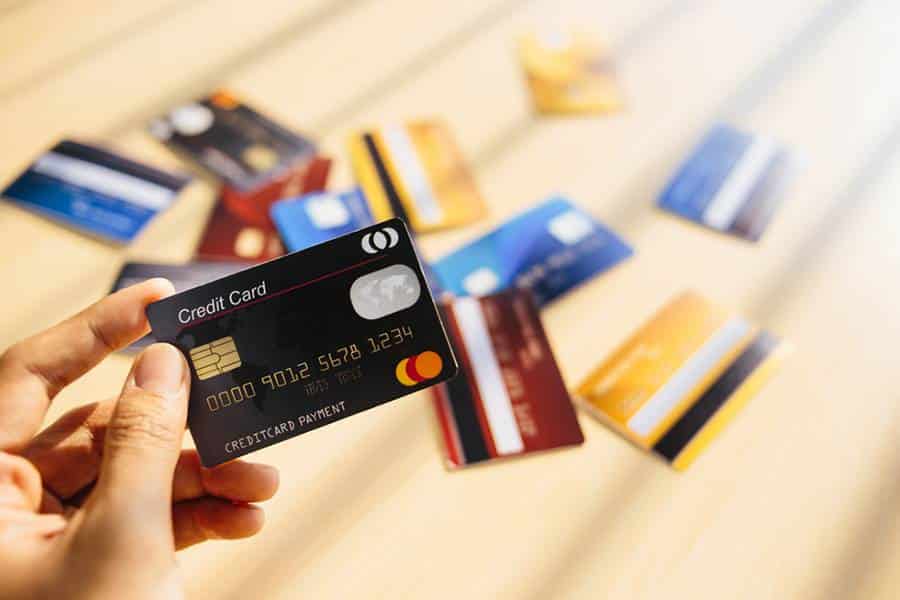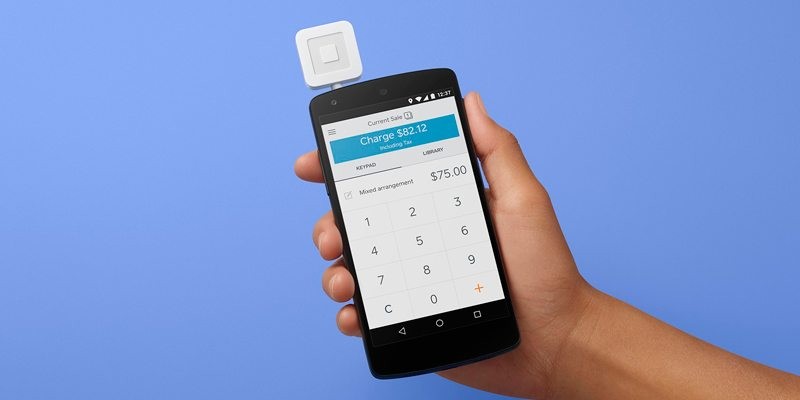
Credit card stacking is the practice of applying for multiple credit cards in a particular order to access a more extensive unsecured line of credit. It works as an alternative financing solution for startups and small business owners, especially those who cannot qualify for a small business loan.
Business owners use this method if they can’t qualify for high-limit business credit cards or if a credit card’s credit limit is insufficient to cover their business’s immediate funding needs. When used carefully, credit card stacking can be a valuable strategy for funding your business.
Credit card stacking works like an unsecured line of credit, where you use multiple credit cards to fund your business. The combined limits of your stack represent your unsecured line of credit, which is revolving and can be used repeatedly. You can either do credit card stacking on your own or work with a credit stacking company to help you get started with card stacking.
What is a credit card stacking company? Also known as a stacking lender, it is a third-party service provider that helps business owners find the best business credit cards for their startups or small businesses. It will identify which business credit cards can best meet your funding needs, help narrow your options down, and process multiple card applications on your behalf.
This practice is a decent alternative to a business loan or business line of credit—and it can even be an excellent option if you don’t have collateral to use for loans. However, because business credit card stacking involves an unsecured credit line, it is considered high risk for card issuers, so most typically require credit scores of at least 680 to qualify.
Here are a few important things you need to remember about how credit card stacking works:
- Your credit limit is revolving: This means that the funds for your purchases come from your approved credit limit, and you are required to pay your balances monthly. Once your balances have been paid, the credit limit will be available for use again.
- You accrue interest on unpaid balances: There may be instances when you are unable to pay your balances in full. When this happens, your outstanding balances will accrue interest until they have been paid off. Note that these may vary per credit card user.
- You may need to provide a personal guarantee: Most unsecured business credit cards require personal guarantee for credit card standing. Having a personal guarantee will give the lender the right to pursue your personal assets if your business fails to repay its accrued debt. If that’s the case, you may want to consider checking our guide on the best credit cards that don’t require personal guarantees and include them on your stack.
- You have to pay your credit card balance when due, including interest and other charges: Using business credit cards responsibly can help you build business credit, which will eventually qualify you for other business financing options. Nonpayment of your credit card bills will adversely affect your credit score, limiting your ability to qualify for business loans in the future.
- You don’t need collateral to qualify: With an unsecured credit card, you don’t need to pledge your business assets or personal assets as collateral.
For more information, read our guide on using credit cards to fund your business.
Pros & Cons of Credit Card Stacking
Who Credit Card Stacking Is Best For
Credit card stacking is best for business owners who need access to a substantial amount of capital but cannot qualify for traditional business financing options like Small Business Administration (SBA) loans, business lines of credit, or working capital loans.
Generally, credit card stacking is best for:
- Business with immediate funding needs: If you need quick funding, this may be an ideal option because you can typically get approved and receive your cards within seven to 10 business days. Consider one of our leading business credit cards with instant approval.
- Business owners who can’t qualify for business financing: Low-revenue businesses often have difficulty in qualifying for financing. With this method, you’ll be able to secure funds faster as compared to a traditional loan as issuers check personal credit scores as part of their qualification process.
- Business owners with no assets for collateral: Unlike most business loans, credit card stacking doesn’t require any collateral, making it a good option if you don’t have or don’t want to use your assets as collateral.
- Startups: This strategy is designed for startups who aren’t qualified for startup business loans. One of the major requirements in applying for a credit card is having a sufficient personal credit score to qualify—so even if you’re just starting with your business, you may still be eligible as long as you have a good personal credit score.
Cost of Credit Card Stacking
- Stacking lender fees: Credit card stacking companies typically charge a fee ranging from 9% to 11% of the approved credit limit, which may vary per stacking lender. This fee only applies if you decide to hire a credit card stacking company.
For instance, you decide to hire a stacking lender that charges a 9% fee of your total approved credit limit, and it was able to get you approved for a couple of business credit cards with a total limit of $120,000. This means you need to pay a service of $10,800 to the stacking lender, which is a significant amount:
- Annual fees: Some card issuers charge annual fees that could go as high as $695 per year. To minimize your credit cost, choose from our list of the best business credit cards with no annual fees.
- Annual percentage rates (APRs): Ideally, you should pay your entire balance every billing cycle to avoid paying interest on your expenses. However, if you carry a balance to the next billing cycle, you will be charged interest rates that could go as high as 35%.
Take advantage of 0% introductory APR. Some credit cards offer an introductory 0% APR period for the first six to 18 months, which is like letting you borrow money without interest. If you plan to use your cards for large purchases, consider one of our top-recommended business credit cards with 0% APR offers.
- Other fees: Business credit cards come with other fees, including fees for cash advances, balance transfers, and international transactions. It’s best to avoid taking out a cash advance as it often comes with a high APR on top of the cash advance fee. If you need to use your credit cards abroad, you can choose from our list of the top business credit cards with no foreign transaction fees.
Benefits of Credit Card Stacking Companies for Small Businesses
Here are a few things that a credit card stacking company can do for you:
- Find which credit cards you are most likely to qualify for: Credit card stacking companies take your personal and business credit scores, your business industry, revenues, and other factors into consideration to decide which credit cards you will qualify for.
- Offer credit cards with the best deals: It requires a lot of time and research on your own to sift through over 1,000 credit cards in the United States and find the ideal card fit for your business needs. Stacking leaders will use their knowledge of banks and card issuers to help you find the card with the lowest interest rates, introductory periods, and best deals according to your business.
- Submit credit card applications for you: A credit card stacking company will submit applications for personal and business credit cards on your behalf. Typically, it will submit around seven to 15 applications at the same time to help you get the total credit limit that you need.
- Protect your credit score: Every time you apply for a credit card, the issuer pulls your credit, which can harm your credit score. Credit card stacking companies can help protect your personal credit scores by submitting your applications strategically, which reduces the number of hard credit pulls on your credit report.
Once approved, you can immediately start using your stack of credit cards as a line of credit to fund your small business or startup. You will receive a monthly statement for each credit card. It’s essential to keep track of each card’s interest rate, credit limit, billing cycle, and due date to avoid paying unnecessary fees.
Credit Card Stacking Without Card Stacking Companies
Not hiring a stacking lender can help save on stacking service fees that could significantly increase your overall credit cost. Fortunately, you can stack credit cards on your own without the need to work with a third-party stacking lender. Follow these simple steps to get started:
Step 1: Get Prequalified
Credit card providers qualify you based on your personal credit score, type of business, business and personal income, and business credit history. Ideally, a credit score of at least 680 is recommended for the best results. If your credit score isn’t strong, then you can find a personal guarantor willing to allow the bank to rely on their personal credit score and pay your debts in case you default.
Step 2: Choose Your Credit Cards
Choosing the right credit cards for your stack is a vital part of credit card stacking. Your business’s spending goals and the rewards or perks you want to receive will likely determine which credit cards would best fit your stack. Examine the costs and fees, including the annual card fee and potential APRs, and find the ones that fit your business needs. You may consider the following types of credit cards:
- Cash back rewards business credit cards: These types of cards let you earn a portion of your purchases back and can be redeemed in multiple ways—as a statement credit, gift cards, and travel, among others.
- Points reward business credit cards: Unlike cash back business credit cards, these cards let you earn points depending on the spending category. Redeeming it can be in the form of hotel upgrades, flights, car rentals, and more.
- 0% APR business credit cards: These cards offer long 0% introductory periods on purchases and/or balance transfers. Getting this card is excellent if you are either making large purchases or transferring a significant balance.
- Secured business credit cards: If you do not have good credit standing, then getting this type of card can help improve your credit card standing. Note that it requires a security deposit to apply for this kind of card.
Consider checking out our leading small business credit cards for options.
Step 3: Submit the Applications
The best small business credit cards allow you to apply online and get a decision in minutes. It’s important to know that, when applying for different cards, multiple hard credit checks could have a negative impact on your credit score. If possible, find issuers that won’t perform a hard pull on your credit report so as not to damage your credit score. Otherwise, you should limit the number of cards you apply for to minimize the negative effect.
Step 4: Receive Your Credit Cards
Once approved, you will typically receive your cards within seven to 10 days. These can be used as your business’s unsecured line of credit to help with your funding needs. Each monthly statement will require you to make at least the minimum payment for each card, and any unpaid balances will accrue interest over the next billing cycle. It’s best to pay your balance in full to avoid the risk of running up a credit card debt.
Best Business Credit Cards for Stacking
The best business credit cards for stacking are those that have zero to low annual fees, long 0% APR periods, low ongoing APRs, and rewards that are useful for your business. We also factor in the other benefits that these cards can provide, including flexible rewards redemption options and welcome offers.
Here are the five best business credit cards for stacking, all with a $0 annual fee:
Tips for Business Owners Planning to Use Credit Card Stacking
While credit card stacking can be a source of funding, it also comes with certain risks such as accruing substantial amounts of debt and not being able to pay your balance. The following tips can help you avoid such risks:
- Set a budget: A thorough budget planning can help you avoid overspending. Make sure to set a budget and stick to it so that you don’t spend more than what you need.
- Monitor your expenses: Tracking your expenses on multiple cards could be challenging, so you must use a reliable system that allows you to streamline your expense monitoring process. Ensure that you track your card transactions regularly to determine any trends that may lead to overspending.
- Pay your balance on time: Ideally, you should pay off your balances on time to avoid getting charged with APRs. If you need to carry a balance, make sure to settle at least the minimum required payment to avoid hefty penalties.
- Take note of each card’s due date: Keep in mind that your credit cards may have different due dates, even if they were approved at the same time. Be sure to take note and keep track of each card’s due date to avoid late payments.
- Set up automatic payments: If possible, set up automatic payments for each card to ensure you don’t miss a due date.
- Use rewards to offset charges: Some cards allow you to use rewards earned on purchases as a statement credit, which can help lower your balance. Unless you find a more useful way to redeem your rewards, redeeming them for statement credit is the most recommended option.
- Do not mix your personal and business expenses: Use your business credit cards for business-related expenses only. Commingling your personal and business expenses can cause a lot of problems with accounting, and it can also make tax season more difficult.
- Maintain a low credit utilization ratio (CUR): Credit utilization ratio refers to the amount of revolving credit you’re using divided by the total credit available to you. Ensure that your CUR on each card does not exceed 30% of your available credit at any given time.
Frequently Asked Questions (FAQs)
No, you cannot combine all your credit card limits into one, even though you can use your stacked cards to access a larger credit limit. With credit card stacking, your credit cards will come from different issuers. Each card typically comes with a different credit limit, depending on what the issuer offers. It’s important to take note of all your credit cards, their corresponding credit limits, and when each card’s bill is due.
Spreading out your debt is typically better for your credit because your credit utilization ratio will not be too high on one credit card. Your credit utilization ratio is the amount of credit you use versus the total credit available to you. A high credit utilization may adversely affect your personal and business credit scores.
In a sense, yes, credit card stacking is a legal practice because there is no law that limits you from applying for as many credit cards as you want. However, if you lie about your income in your credit card applications just so you can get approved, you may face legal issues regarding perjury.
In a way, yes. When you pay your credit card balances twice within a month, you can help reduce the balance being reported to credit bureaus. Another advantage of paying your balance twice in a month is that it can free up available credit faster, which can then help increase your purchase power.
If you’re carrying a balance that is accruing interest, it’s better to make multiple payments in a month, overall it will reduce the amount of interest you pay vs waiting to make a payment once a month.
Bottom Line
Credit card stacking is an alternative form of business financing that allows you to fund your startup or small business through an unsecured line of credit. It is a good financing option if you are having trouble qualifying for an SBA loan or want to earn cash rewards. However, if you don’t want to monitor several credit cards, it’s best to consider other business loan options. Explore the best easy business loans to find a better alternative to credit card stacking.





